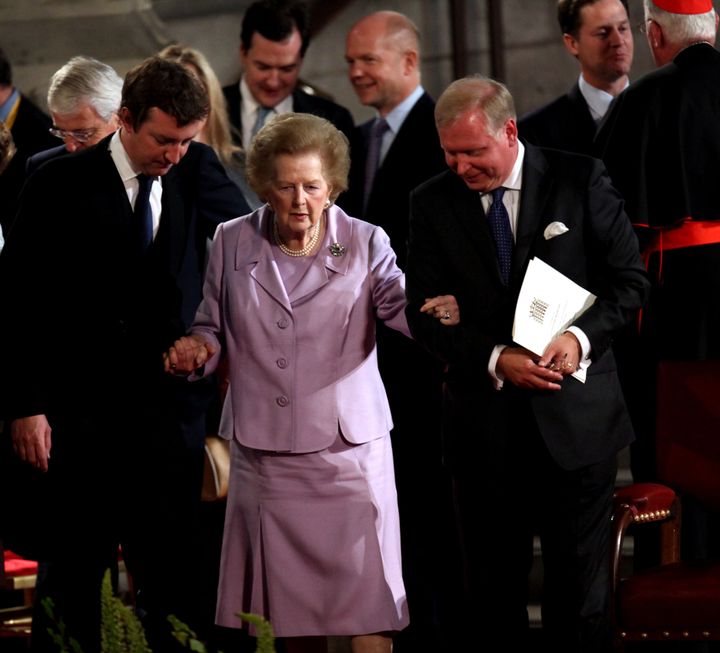
Margaret Thatcher, the "Iron Lady" who served as the first female prime minister of Britain, died of a stroke Monday, according to news reports.
Thatcher, who governed Britain for 11 years from 1979 to 1990, "died peacefully following a stroke this morning," her spokesman, Lord Bell, told The Telegraph. Her death was confirmed by her son and daughter.
This was not Thatcher's first stroke -- The Telegraph reported that she had suffered several strokes between 2001 and 2002. Her health woes also included dementia, with which she was diagnosed in 2008.
CNN reported that she had to be hospitalized in December of last year because of a growth that had developed in her bladder.
A stroke is generally defined as deprivation of blood to the brain. This leads to a lack of oxygen and nutrients to the brain, causing cell death, according to the Mayo Clinic.
There are different kinds of stroke, but the most common -- making up 85 percent of strokes -- are ischemic strokes, which are caused by narrowing/blockages of the arteries that go to the brain, the Mayo Clinic reported. Other kinds of stroke include hemorrhagic stroke -- which is when the blood vessels leak or rupture -- and transient ischemic attack, also known as a mini-stroke -- which has similar symptoms to a stroke, but doesn't cause lasting symptoms (and is often considered a warning sign for an actual stroke).
Thatcher's exact type of stroke was not specified in news reports.
It's not uncommon to have more than one stroke. One in four people who have a stroke will have another one sometime in their lifetime, and anywhere from 5 to 14 percent of people who have a first stroke will also have a second stroke within the next year, according to the National Stroke Association. And 24 percent of women and 42 percent of men will have a recurrent stroke within five years after a first stroke.
Even though there was no specific confirmation that Thatcher's strokes were related to her dementia, research has shown that about 30 percent of people who have experienced recurrent stroke do go on to develop dementia, Medscape Today reported.
Age is a huge risk factor for stroke, as is family history, race, migraine history, heart attack history, sex (men have a higher risk) and having conditions including sickle cell anemia, the University of Maryland Medical Center reported. Modifiable risk factors include smoking, being obese, not exercising, stress and high alcohol intake.
Stroke symptoms aren't the same for every person, but usually involve experiencing weakness or numbness on one side of the body, having trouble talking or understanding speech, vision problems, headaches and dizziness, according to the University of Maryland Medical Center.